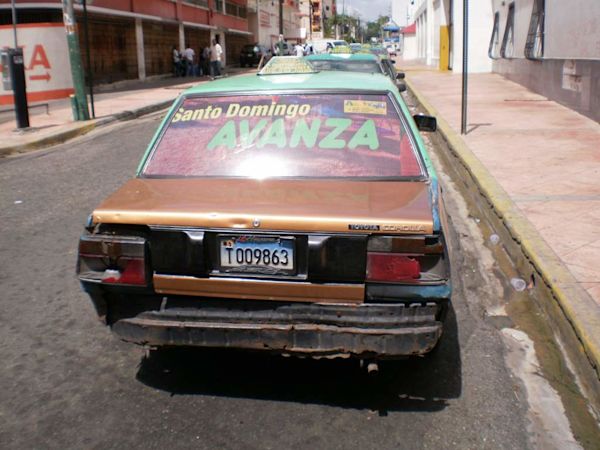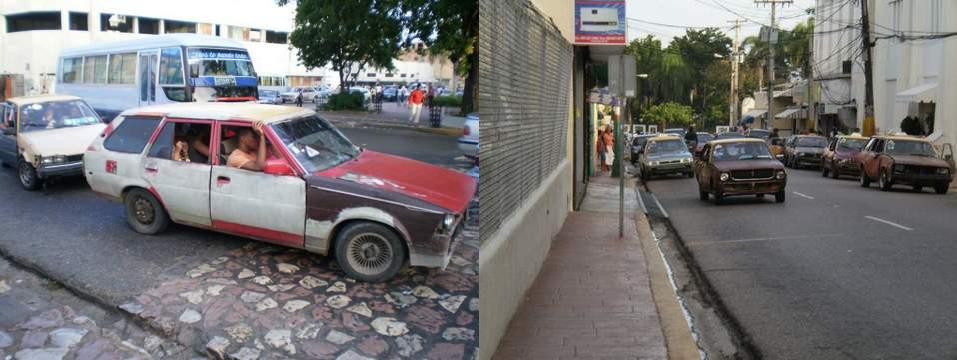
By Thomas Gold, KF9 Dominican Republic
For English version, click on “read the rest of this entry”, then scroll down.

« La République Dominicaine est un pays aux couleurs vives, musiques et danses irrésistiblement entraînantes et climat tropical».Voici la seule image que j’étais capable de me figurer, en attendant mon avion à l’aéroport de San Francisco, du lieu où j’allais passer les prochains mois de ma vie.
Une semaine après mon arrivée dans le pays, cette vague représentation s’est précisée et matérialisée, en fonction des premières impressions que j’ai pu ressentir, et dont voici quelques exemples.
Tout d’abord le contact avec les habitants :
Lorsqu’un lien direct existe avec une personne, le contact sera tout de suite chaleureux et personnel. J’ai été impressionné de voir comment mes collègues ont rapidement enregistré mon nom, dont la sonorité ne leur est pourtant pas familière. Si le lien est plus commercial (hôtel, petit commerce), le premier contact peut vous laisser une impression de froid, mais en général, il suffira de faire l’effort d’échanger quelques mots avant d’échanger la monnaie pour créer une relation plus amicale, et passer du tarif « gringo » au tarif normal. Beaucoup de personnes viennent naturellement vers vous, et si certaines vous voient comme un touriste à qui soutirer de l’argent, d’autres sont tout simplement curieuses et prêtes à rendre un service
Les routes et les voitures
Si je me suis senti jusque maintenant en sécurité dans n’importe quelle situation, le danger vient sans aucun doute de la route. C’est la loi du klaxon le plus fort (seul équipement dont on est sûr que tous les véhicules sont munis) et les piétons n’ont qu’à bien se tenir.
Les quartiers plus anciens et zone piétonnes ne manquent pas de charme mais en ville, les trottoirs servent souvent de décharge à ciel ouvert. Sur les routes, on est toujours frappé de voir fonctionner ces voitures d’un autre âge, à la carrosserie défoncée et rouillée, aux roues déformées, aux portières manquantes et pourtant presque tout le temps bondées. Il s’agit en fait de véhicules publics tout à fait officiels qui servent de transport collectif plûtot efficace d’ailleurs. Même ce qui apparaît sur GoogleMap comme des axes principaux de la ville sont souvent des rues étroites où la circulation est chaotique.

Dans ce décor caribéen où couleurs, musiques, nourritures font écho à la chaleur du climat tropical, des personnes de toutes sortes de classes sociales se mélangent. Si certains ont des standards de vie élevés (et sont équipés de gadgets technologiques bien plus modernes que les miens), beaucoup, bien plus modestes font preuve de beaucoup d’ingéniosité et de persévérance pour se générer un revenu : mini-boutiques coincées entre deux murs d’immeubles, vendeurs ambulants, services de toutes sortes, les exemples foisonnent dans les rues de Santo Domingo. C’est dans ce contexte, et avec l’objectif de servir les populations marginalisées pour qu’elles puissent par leurs propres efforts et grâce à un accès équitable au capital, que les organismes de microfinance interviennent en République Dominicaine et partout dans le monde.
Durant les mois qui viennent, je vais avoir la chance de partager avec la cinquantaine d’autres Kiva Fellows répartis au quatre coins du monde des anecdotes sur les chocs culturels et surtout les histoires passionnantes des entrepreneurs présentés sur le site Internet de Kiva
Dans un prochain post, je vous parlerai plus précisément d’Esperanza Internacional, le partenaire de Kiva avec qui je commence à travailler. En atendant, cliquez ici pour consulter les profils de leurs clients.
English version
« The Dominican Republic is a country with bright colors, irresistible music, dancing and tropical climate.” While I was waiting for my flight at San Francisco’s airport, this is the picture I had in my mind of the place I was going to spend the next few months of my life.
One week after my arrival, this vague impression has become more accurate and concrete based on my first experiences. Here are some examples.
First of all, getting in touch with the locals:
When a direct connection exists with a person, interactions will instantly be warm and personal. I was impressed at how quickly my colleagues at work remembered my name, even though it is unfamiliar to them.
If people have a connection through business (like hotel, little shops,…) the first contact often seems colder, but generally, you just need to share a few words before exchanging money and you will fare. Seeing you as a foreigner, many people approach you, and although some just hope to swindle you, many are just curious and ready to lend a hand.
Roads and cars
So far, I have felt safe in pretty much any situation, but the roads are definitely dangerous. Drivers blast their horns (the only reliable piece of equipment on every car), and pedestrians had better watch out!
Historic districts and pedestrian areas are charming but in town, sidewalks are often used as an open dump. On the roads, it is always amazing to see vehicles from an age passed actually working, with rusty and dented bodies, distorted wheels and missing doors; nevertheless these cars are always packed. These vehicles are in fact, part of the official public transit system and are pretty efficient, by the way. Even the roads that seem like main thoroughfares are often narrow streets congested with chaotic traffic.
In this Caribbean setting, colors, music, and food echo the tropical heat; all kinds of people from different social classes mingle together. Some of them enjoy a high standard of living (and own electronic devices much fancier than mine), many of them come from much more modest backgrounds and show a lot of ingenuity, drive and perseverance to earn a little income from: mini-shops stuck between the walls of two buildings, food stands and businesses services of all kinds; examples abound in Santo Domingo’s streets.
In this context, microfinance institutions are working in the Dominican Republic and elsewhere around the world with the aim to serve poor and marginalized people so that they can make a living by their own efforts and by having fair access to capital.
For the next few months, I am proud to share, along with 50 other new Kiva Fellows scattered allover the world, anecdotes and impressions on cultural shocks and overall captivating stories of micro-entrepreneurs who appear on Kiva’s website.
In another entry, I will write about Esperanza Internacional, Kiva’s partner with which I’m working. Until then, click here to browse their borrowers’ profiles.
Lots of thanks to Gemma for helping with the translation!
/>













